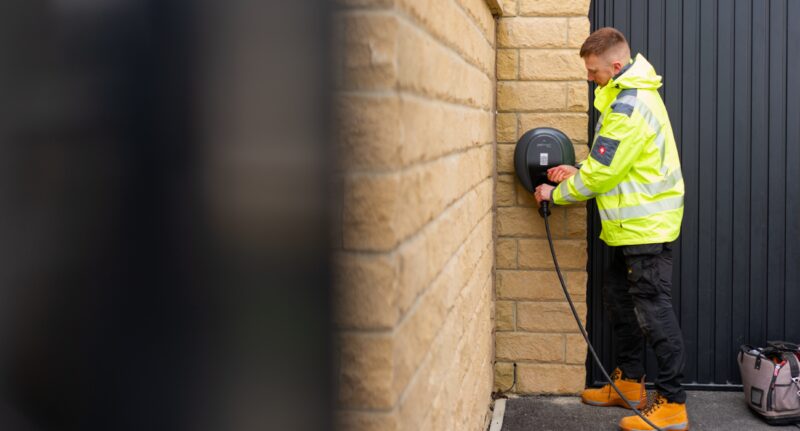What is WLTP? An EV Driver’s Guide to Consumption and Emissions Testing
A guide explaining the meaning of the Worldwide Harmonised Testing Procedure or WLTP and exploring tests that were previously used.
Last updated: Jul 26, 2024 • 4 min read

Summary
The WLTP is a testing procedure carried out in a lab environment to determine the fuel or energy consumption and CO2 emissions of a vehicle. It’s used for electric and internal combustion engine cars.
The meaning and importance of WLTP, NEDC and RDE
As long as cars have existed, knowing how far you can travel before refuelling has been a key question among drivers. To address this, the first fuel consumption and emissions test for cars - the NEDC - was introduced in the 1980s. It was modified over time in an effort to keep up with changing cars and driving conditions. This test wasn’t very reliable, so in 2017, a new testing procedure - the WLTP - was implemented to provide more accurate range and emissions estimates.
What is WLTP?
The World Light Vehicle Test Procedure or WLTP is a test used to determine the energy or fuel consumption and CO2 emissions of electric and combustion engine vehicles. Established to address criticisms and issues of the previous NEDC testing procedure, the WLTP has become the global standard in testing by assessing a variety of driving conditions.
How does the WLTP test your vehicle?
WLTP tests take place on a rolling road. It’s machinery which allows the wheels to roll while the car remains stationary, meaning the procedure can be carried out indoors in a laboratory environment. The WLTP testing cycle was created using real-life driving data to better represent common driving habits and conditions. The cycle features braking, stopping and acceleration throughout, and is split into four cycles to measure consumption and emissions at different speeds, which are:
Low (up to 56.6km/h)
Medium (76.6km/h)
High (97.4km/h)
Extra high (up to 131.3km/h)
The default ambient testing temperature is set at 23°C and adjusted to 14°C to test CO2 emissions for a wider range of climates. Depending on where vehicles are tested, some regions will apply the WLTP test differently to correspond with local laws and conditions.
What is RDE?
The Real Driving Emissions Test or RDE is a test that is performed in addition to the WLTP to determine NOx emissions generated by the vehicle. This testing procedure checks if cars remain below the NOx emission limit of no more than 0.080g/km across various driving conditions.
There are two types of RDEs based on the approval and registration year of vehicles:
RDE1 – approved from September 2017 and registered from September 2019, up to 2.1x of maximum NOx
RDE2 – approved from January 2020 and registered from January 2021, up to 1.5x of maximum NOx
What is NEDC?
The New European Driving Cycle or NEDC was a lab test introduced to assess fuel economy and emissions in the 1980s and was last updated in 1997. Similar to the WLTP, it was performed on a rolling road but has become outdated over the years, as driving conditions and technology changed. It has been officially replaced by the more reliable WLTP.
One of the key issues with the NEDC was that the testing cycle was too rigid, meaning it poorly reflected everyday driving.
Do electric cars have to do the NEDC?
New electric cars don’t have to do the NEDC and will undergo the WTPL instead. Although EVs sold pre-2017 would have had their range tested using the NEDC, you’ll be able to find the estimated WTPL range for these models online.
What is the difference between NEDC and WLTP?
NEDC | WLTP | |
Test cycle | 20 minutes | 30 minutes |
Cycle distance | 11 kilometres | 23.25 kilometres |
Average speed | 34km/h | 46.5km/h |
Maximum speed | 120km/h | 131km/h |
Driving phases | Two set phases | Four dynamic phases |
Testing temperatures | 20–30°C | 23°C, 14°C for CO2 emissions |
Gear shifts | Fixed gear shift points | Vehicle-specific gear shift points |
Should I use the WLTP or NEDC for my EV?
The WLTP is the gold standard for vehicle consumption and emissions testing. It’s the most accurate standardised test used globally. With the WLTP range and emission figures, potential EV buyers can reliably compare performance across different cars to help them find the best vehicle to suit their needs.
Although the WLTP comes much closer to the real-life range EV drivers will experience than the now-defunct NEDC, it’s still not 100% accurate. The industry may look to develop another testing procedure to provide an even closer estimation of car ranges in the future.

